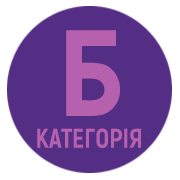ENSURING INFORMATION ACCESSIBILITY FOR PEOPLE WITH COGNITIVE DISABILITIES (REVIEW OF INTERNATIONAL DOCUMENTS AND RESEARCH)
DOI:
https://doi.org/10.32782/inclusion/2024.3.12Keywords:
information availability, international documents, limitations of activity, person with disabilities, cognitive disabilities, easy readAbstract
The article provides an analysis of the content of international documents on ensuring accessibility for people with disabilities. The articles of the UN Convention on the Rights of Persons with Disabilities were analyzed, which reveal the meaning of the concept of “accessibility” and describe the main characteristics of information accessibility. The purpose of the article is to analyze in detail international legal documents, standards and scientific research on ensuring information accessibility for people with cognitive disabilities. It was determined that information availability is a priority area of many international organizations, in particular UNESCO and the World Health Organization. Public non-profit organizations around the world (Plain Language Action and Information Network, Inclusion Europe, Netzwerk Leichte Sprache, AbilityNet and others) consider the need to ensure information accessibility for people with cognitive disabilities as one of the areas of their activity to protect the interests of this category of people. The main directions of scientific research on the availability of information for people with cognitive disabilities are outlined: 1) coverage of the content of the practical developments of specialists; 2) involvement of people with cognitive disabilities in working groups for the development and assessment of the availability of information resource; 3) targeted observations of the use of available information resources by people with cognitive disabilities in everyday life; 4) assessment of the accessibility of the adapted information format for people with cognitive disabilities. The algorithm for creating accessible information resources in an easy-to-read format is analyzed, which includes: project development; creating a layout; requirements for the use of special vocabulary of the document; compliance with the rules of writing sentences; execution of layout design; compliance with image selection rules; verification of the text by the target audience.
References
United Nations. (2006). UN Convention on the Rights of Persons with Disabilities. URL: https://social.desa.un.org/issues/disability/crpd/convention-on-the-rights-of-persons-with-disabilities-crpd.
UNESCO. (2001). Information for All Programme (IFAP). URL: https://en.unesco.org/programme/ifap
World Health Organization. Regional Office for Europe. ( 2022) . Implementation plan and monitoring and evaluation framework of the WHO European framework for action to achieve the highest attainable standard of health for persons with disabilities 2022–2030.World Health Organization. Regional Office for Europe. URL: https://iris.who.int/handle/10665/364995
Chinn, D. and Homeyard, C. (2017). Easy read and accessible information for people with intellectual disabilities: Is it worth it? A meta-narrative literature review. Health expectations : an international journal of public participation in health care and health policy, 20 (6), pp. 1189–1200. DOI: https://doi.org/10.1111/hex.12520
Cardone D. (1999). Exploring the Use of Question Methods: Pictures Do Not Always Help People with Learning Disabilities, The British Journal of Development Disabilities, 45 (89), pp. 93-98, DOI: https://doi.org/10.1179/096979599799155894
Hurtado B, Jones L, Burniston F. (2014). Is easy read information really easier to read? Journal of Intellectual Disability Research, 58(9), pp. 822–8299. DOI: https://doi.org/10.1111/jir.12097
Feldman MA, Case L, Garrick M, MacIntyre-Grande W, Carnwell J, Sparks B. (1992). Teaching child-care skills to mothers with developmental disabilities. Journal of Applied Behavior Analysis, 25(1), pp. 205–215. DOI: https://doi.org/10.1901/jaba.1992.25-205
United Nations. (2011). Federal Plain Language Guidelines. URL: https://www.plainlanguage.gov/media/FederalPLGuidelines.pdf
Information for all: European standards for making information easy to read and understand. 2010. URL: https://www.inclusion-europe.eu/easy-to-read-standards-guidelines/
Sprache eV, N. L. (2019). Satzung: Netzwerk Leichte Sprache e.V. URL: https://www.leichte-sprache.org/wp-content/uploads/2021/02/Netzwerk-Leichte-Sprache_Satzung_2019-09-29.pdf
European Agency for Special Needs and Inclusive Education. Guidelines for Accessible Information. ICT for Information Accessibility in Learning (ICT4IAL). URL: https://www.ict4ial.eu
AbilityNet. (2023). How to make documents accessible. URL: https://abilitynet.org.uk







